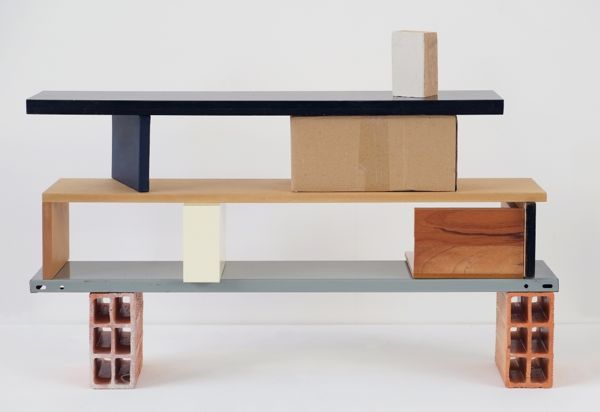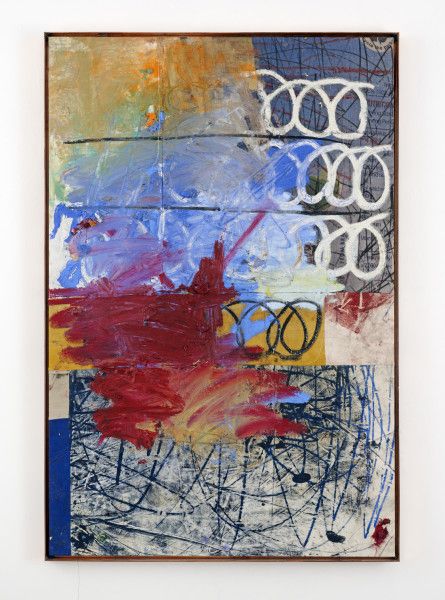Analysis
ArtRio Attracts International Heavyweights and Niche Galleries Alike
Oscar Murillo and Ricardo Alcaide among the artists at the fair's fourth edition.
Oscar Murillo and Ricardo Alcaide among the artists at the fair's fourth edition.
RIO DE JANEIRO — The fourth edition of the modern and contemporary art fair ArtRio opened its doors yesterday, at Pier Mauá, in the commercial district of Rio de Janeiro, and it was a sight to see.
Whether visiting smaller international galleries in the 2nd Pavilion or international heavyweights like David Zwirner, Gagosian, and White Cube, many of the works on view seemed to be in dialogue with Brazil’s Concrete and Neo-Concrete movements of the 1950s and ’60s (a cool form of abstraction that used simple color and form, was said to emanate from the mind, and lacked sentimentality). Also apparent were so many artists’ affinity for conceptual art, as well as the influence of the country’s colorful craft traditions. The international galleries, it seemed, when deciding what to bring down, had considered “place.”
Anchoring the booth of Y Gallery, a small New York gallery devoted to showing work of emerging Latin American artists, was The Writer, a work by Brazilian artist Mauricio Lanes (an artist also represented by São Paulo gallery Vermelho at the fair), of pieces of paper in a grid that had words scrawled on them in black ink. Lanes had “written” the words with his tongue during a performance in New York.
Y Gallery was back for its third time at the fair. “Last year, we invited Vermelho to do a show with us,” said the Gallery’s Cecilia Jurado. “From there we built a relationship.” Within the first hour, Jurado had sold a minimal work by artist Ryan Brown. The rest of the works ranged from $4,000 to $16,000. Also on view were conceptual light works by G.T. Pellizzi (whom the gallery represents together with Mary Boone in New York, according to Jurado).
New York’s Johannes Vogt gallery representatives recalled how the gallery had sold all of the work by Travis Boyer that they had brought for the gallery’s first time at ArtRio three years ago. But things have been less predictable since then. “We brought him last year and he didn’t sell” said gallery director Adriana Favieta.
Work that does best for the gallery, which had a cushy spot in the Vista section (dedicated to young galleries featuring experimental curatorial projects) is “anything under $12,000,” Favieta said. She remarked that because these artists are not a known quantity to Brazilians, it can be difficult to engage collectors. This year, lining one wall and generating interest were small, delectable conceptual works by São Paulo–based Venezuelan artist Ricardo Alcaide. “Brazilian artists get pretty good attention,” Alcaide said, standing in the booth.

Ricardo Alcaide, Settlements n7 (undated).
Courtesy Baró Galeria.
The artist, who moved from London to São Paulo a few years ago, asserted that knowing people is an important part of navigating the São Paulo–Rio circuit. “For a foreigner, it’s not that easy to enter the market. It’s much more difficult to bring people to your show (in São Paulo).” Living in São Paulo has been good for his career, he said, but mostly on the international art fair and gallery circuit. “In London,” he said, “the audience is already looking for Latin American artists.”
“They told me, ‘Bring Latin American artists here’,” said Steve Turner, who brought his eponymous LA gallery to ArtRio for the first time. “I thought about it and said: I’m not going to do that. I’m going to bring two artists who don’t claim nationality.”
Rather than bring Latin American artists he shows, like Mexico City–based Pablo Rasgado, and Colombian artist Camilo Restrepo, he brought hyped-up post-Internet artists Rafaël Rozendaal and Michael Staniak. “Rafaël Rozendaal says he lives and works on the Internet,” Turner said.
One of the Rozendaals had already sold to a German collector. The others had waiting lists. Was he looking to add Brazilian artists to the roster? “There’s all these regions to be aware of,” he said. “There’s Porto Alegre, Bahia, São Paulo, Rio, Belo Horizonte. It would be crazy to think I could come here on my first trip and figure it out.”
Blue chip galleries like David Zwirner and White Cube denied having tailored their programs to the fair. Greg Lulay, a director at David Zwirner, said the gallery was showing artists from its stable “who don’t get seen here,” including Francis Alys, Carol Bove, Yayoi Kusama, and gallery newcomer Oscar Murillo, who was standing in the booth.

Oscar Murillo,
quantifying an ad campaign #8, (2014).
Courtesy the artist and David Zwirner, New York and London.
But Lulay conceded that some works in the booth, like a minimalist work by Donald Judd, “are in conversation with [Brazil’s] Concrete movement and the Neo-Concrete movement.” The fun Kusama sculpture of pink high-heeled shoes with white polka dots also seemed suited to Rio’s flashy atmosphere somehow. As for Murillo, Lulay said his presence at the fair had less to do with his Colombian nationality and more to do with the gallery’s interest in introducing the artist to collectors here.
Though it is still early in this edition of ArtRio, which will run through September 14, it does seem that booths of the out-of-town international galleries have been somewhat quieter than those of their Brazil-based counterparts, which have been more consistently abuzz with visitors and conversation. Potentially this seemed to indicate that it’s not what you bring, but who you know. Even White Cube, which opened a gallery in São Paulo in 2012 (its second space outside the UK), had small clusters of people continually stopping in. And its centerpiece—a challenging work by Jake and Dinos Chapman, a terrarium filled with masses of tiny bloodied figurines, some in Nazi uniforms, others naked, in a gruesome Goya-esque diorama—seemed least sympathetic to Latin American artworks. All the gallery director would say was that the gallery has done the fair three times and had brought “strong pieces” this time around. “We have Georg Baselitz, Andreas Gursky, and Damien Hirst,” the director said, just as yet another pair of collectors began to approach.